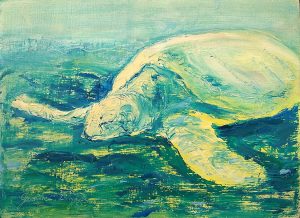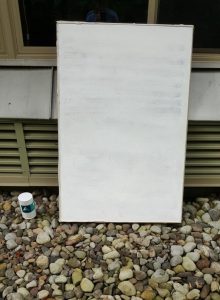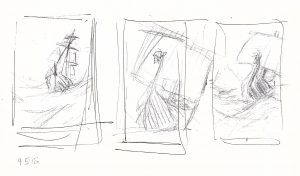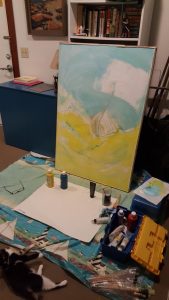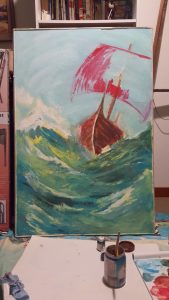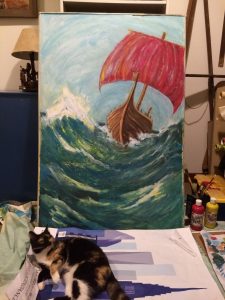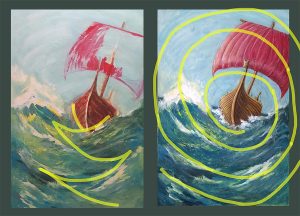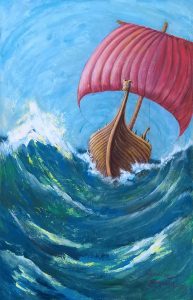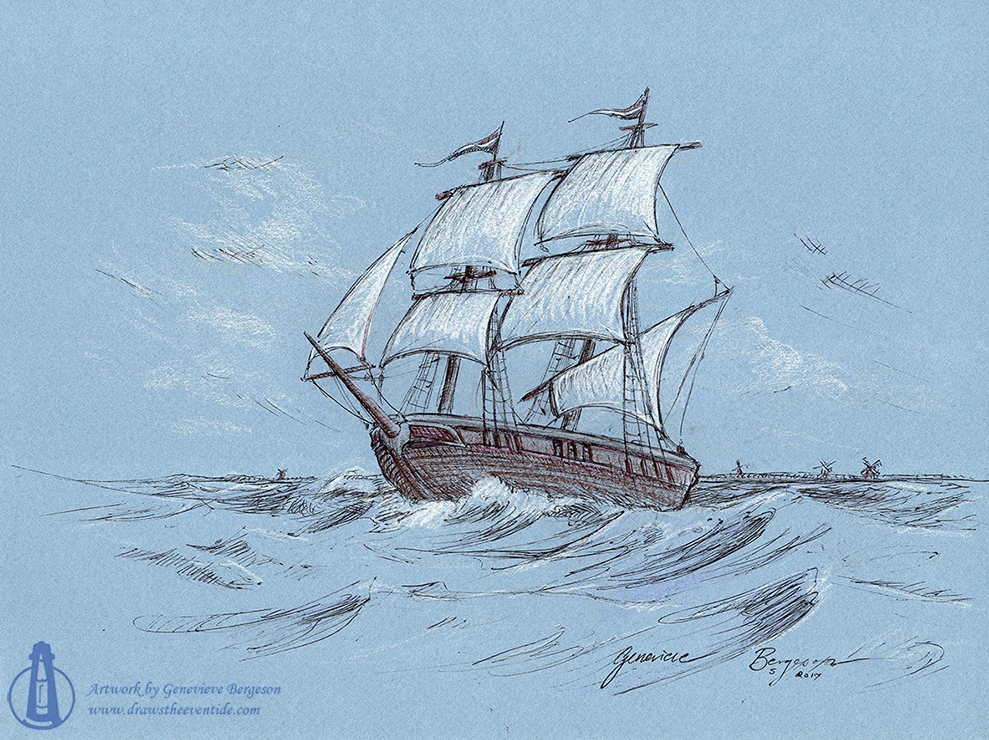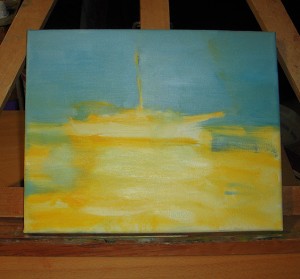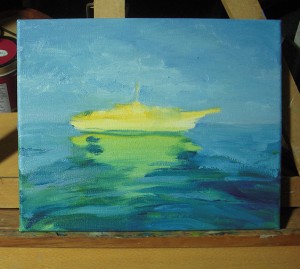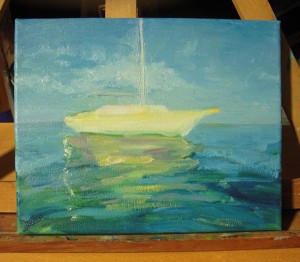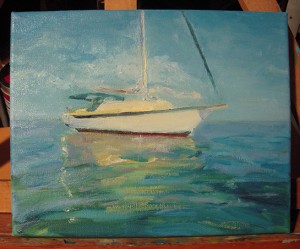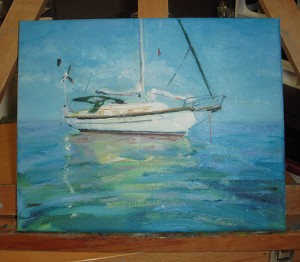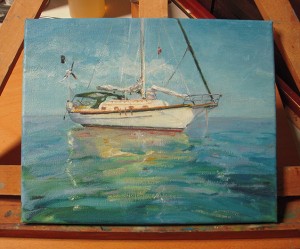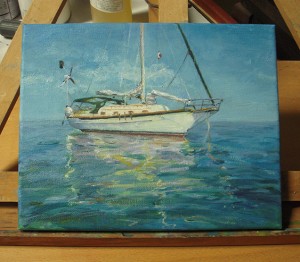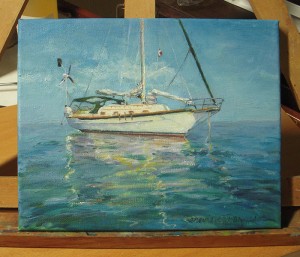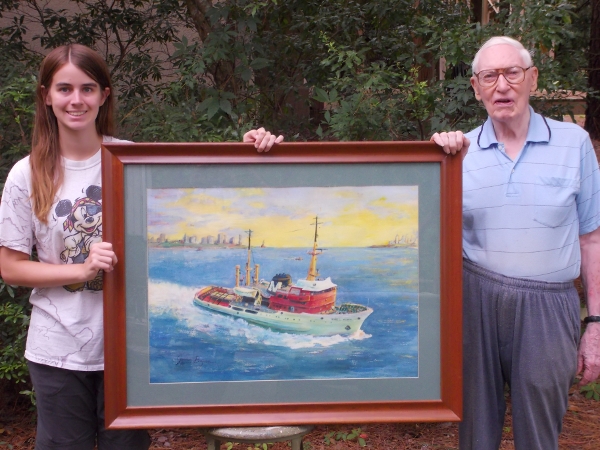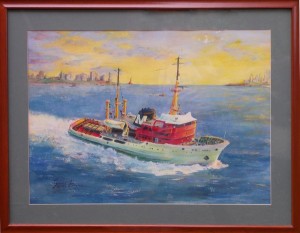For 2022, Principia invited alumni artists to submit pieces for consideration in its calendar. Apparently the calendar committee received enough submissions it liked that, after the submission deadline, it decided to also to create a set of note cards (which are given as gifts to those who join the alumni clubs and perhaps to donors). One of my paintings was selected for the card set; it’s one I’ve shared before: SV Tommy Dundee. The set is 12 cards, each featuring a different piece.
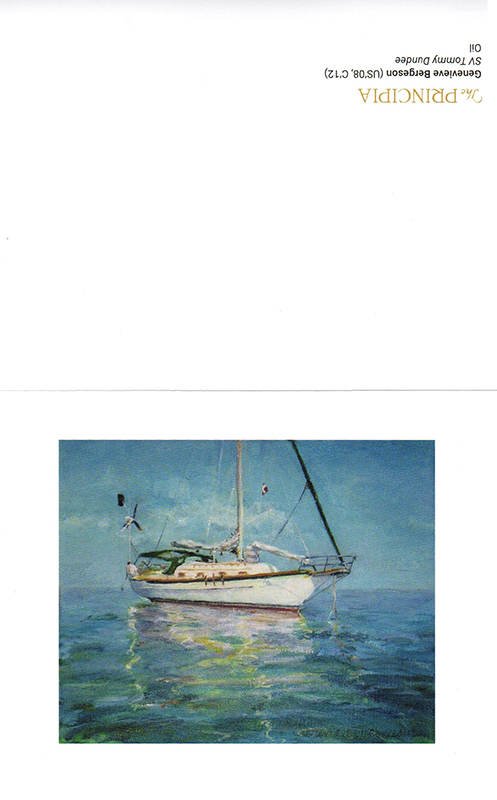
Interestingly, I hadn’t initially planned to submit the oil painting, but I had an inkling that maybe I should anyway.
Supposedly there is a collage on page 2 of the calendar, & one of my sea turtle paintings, Honu Resting, is included. (I do not have a calendar, so I cannot say where for sure.)
The Principia cards and calendars are now available for purchase at www.principiaalumni.org/calendars.
If you would like more than 1 of SV Tommy Dundee in your card collection, you can order a set of my existing cards (5 for $7, 10 for $10); just email me. The artwork on my card covers the entire front (no white field) and fits nicely in a little frame, too.
On another note, I have ideas for at least two more Art Walks. One of them will probably be ready before the end of the year. Stay tuned.
Last but not least, have a happy, blessed Thanksgiving!

